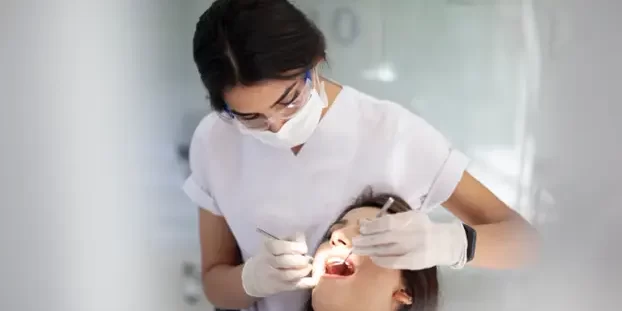Within this blog we will be covering all the key points to know about how to clean your own teeth like a hygienist. This includes how to brush your teeth effectively and the importance of using interdental brush and floss
Brush Your Teeth Effectively
Brushing teeth effectively will bring you the benefit of having strong and healthy gum and reduce the chance of tooth decay. The followings cover how to choose the correct tools and an effective brushing skill:
- Use toothpaste with fluoride concentration of around 1500 parts per million (ppm).
- Choose a toothbrush with soft bristle and a small head so that it can reach every surface of your teeth. Both manual and electric toothbrushes are equally effective, and consult your dentist or hygienist if you have specific needs.
- Brush twice a day, in the morning and before bed at night.
- When brushing your teeth, hold the toothbrush at 45-degree towards the gum, brush the outer surfaces and inner surfaces, then the chewing surfaces of all teeth.
- Brush your teeth in an orderly manner, that is, starting from the end of one side, all the way to the other side, to ensure all teeth are covered.
- If you are using manual toothbrush, using short strokes back and forth, covering 2 – 3 teeth at a time, then move on to the next 2 – 3 teeth; if you are using electric toothbrush, gently hold the toothbrush on each surface and let the toothbrush do the job.
- Spit out all the toothpaste in your mouth and not rinsing with water, let the fluoride continues its preventive effect on your teeth.
Using Interdental brush and floss
Brushing with toothbrush is only doing part of the teeth cleaning, for areas in-between teeth, only interdental brush or floss can reach and do the job. This should be done once every day. The followings cover how to choose the correct tools and the effective approaches of using them:
- Interdental space varies from teeth to teeth, therefore choose the correct size for cleaning each space, a wider gap may require a big interdental brush, therefore there will be no one-size-fit-all when it comes to interdental space cleaning, you may need more than one size of brush.
- A correct size of interdental brush will give some resistance when cleaning between the teeth but will not be too hard to insert.
- Clean the interdental area to remove all the plaque and food trapped in there, then work on the next space, until every area is covered.
When the interdental area is too narrow and cannot be cleaned by interdental brush, dental floss is the alternative of doing the job, the following will show you how to master the skill:
- Cut out a piece of floss of 25 to 45 cm.
- Wind the ends of the floss around your middle fingers, until a controllable section in the middle.
- Control a length of around 2.5cm with your thumbs and forefingers and make it taut.
- Wiggle the floss in between teeth, after it passes the tightest contact point, gently bring the floss down to the gum, wrap around one tooth by curving the floss into a C-shape, gently glide the floss up and down against the tooth surface until it is clean, wrap the floss to the other side of the gap and make another C-shape, cleaning it with the same manners.
- Wiggle the floss out from the interdental space and move on to the next gap, repeat the above procedure.
Check with your dentist or hygienist in the next appointment to see whether the skills is effectively performed, refine the skill until it meets your personal needs.

